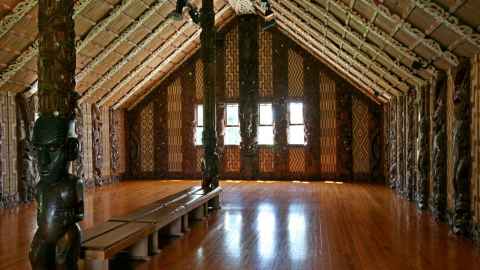Te Tiriti history can’t be 'left to chance'
13 September 2022
Opinion: Those designing the curriculum shouldn't avoid Te Tiriti facts that may provoke a reaction, particularly among those still clinging on to narratives of consensual colonisation, writes Christopher Burns

When the government announced that New Zealand history would be prescribed in schools, Jacinda Ardern stated that under the existing model “too much is left to chance in the teaching and learning of New Zealand history”.
The framework to support teachers to teach Aotearoa New Zealand’s histories was released in March, and schools and kura are expected to implement the new curriculum contents from Term 1 in 2023.
However, the changes to the draft curriculum document mean that crucial aspects of teaching and learning about Te Tiriti o Waitangi will continue to be “left to chance”. Specifically, all content describing the assurances given to rangatira in 1840 that signing Te Tiriti would not undermine their mana has been cut from the “Key knowledge” sections of the curriculum document.
This is important. Academic consensus is that rangatira believed they would retain their authority when they signed Te Tiriti, which is crucial to understanding New Zealand history and should form a foundation for students to pursue their own meaningful inquiries into aspects of Te Tiriti. As recent discussions concerning co-governance illustrate, an understanding that Māori did not cede sovereignty should not be considered a conclusion, but an opening to explore what it means to honour the agreement.
In the draft curriculum document students were expected to learn in Years 4-6 that rangatira who signed “were given assurances that [the treaty] guaranteed their chiefly authority”. In the final version of the document, this statement is replaced with “Māori understandings were based on the version in te reo Māori”. This is described as different to the English version, but the differences are not explained.
Moving this content from “Key knowledge” to “Key questions” means that teachers and students may be encouraged to see claims that rangatira did not cede sovereignty as being up for debate. Such an approach is likely to obscure the overwhelming evidence of the Crown’s failure to communicate its intent to claim sovereignty.
The most explicit statement in the draft about rangatira understanding of Te Tiriti was in the Years 7-8 content. This stated, “it is clear that Māori did not cede their mana to the Crown, and that they signed in the belief that it would give them the power to govern in partnership with the Governor”.
Yet this has been removed in the final version, as has the statement that in Years 9-10 students should learn that in “1840, the Treaty promised to protect tribal rangatiratanga. By 1900, it had become the means of regaining what it had promised – rangatiratanga, mana motuhake, self-determination”.
While the term “sovereignty” itself was not used in the draft curriculum it largely aligned with the Waitangi Tribunal’s landmark ruling in 2014 that rangatira who signed Te Tiriti in February 1840 did not cede sovereignty. This view is supported by the overwhelming consensus of academic historians and iwi and hapū histories. Words matter today, as much as they did in 1840. The removal of these statements represents a significant shift in how the teaching of Te Tiriti o Waitangi will be prescribed in our schools and kura.
However, this shift was not signalled by the Ministry of Education. Concerns raised about the way the curriculum covers the signing of Te Tiriti are not mentioned in the Ministry’s summaries of public engagement either, nor in the feedback on the draft produced by the Royal Society’s expert panel.
The Royal Society’s feedback echoed a theme expressed by others that the draft document encouraged “conclusions to be demonstrated”, rather than student inquiry. The revised document responded to this concern by providing “Key questions” to support the “Key knowledge”. It is within these questions that students are prompted to consider how rangatira may have interpreted Te Tiriti.
This might read as a minor detail, but it has important implications. Moving this content from “Key knowledge” to “Key questions” means that teachers and students may be encouraged to see claims that rangatira did not cede sovereignty as being up for debate. Such an approach is likely to obscure the overwhelming evidence of the Crown’s failure to communicate its intent to claim sovereignty.
Many New Zealanders still continue to claim Māori ceded sovereignty in signing Te Tiriti, including the leader of the opposition. Christopher Luxon may see this as his “interpretation”, but if the goal of prescribed history content is to improve New Zealanders’ understanding of the past, students need access to the historical knowledge to recognise this as a misinterpretation.
Educators and curriculum designers cannot simply avoid topics that may provoke a reaction, particularly among those still clinging on to narratives of consensual colonisation and the best race relations in the world. In these moments, teachers must be equipped with expert knowledge and clear guidance to ensure a meaningful and accurate history education is not “left to chance”.
Christopher Burns is a doctoral candidate in the Faculty of Education and Social Work.
This article reflects the opinion of the author and not necessarily the views of Waipapa Taumata Rau University of Auckland.
This article was first published on Newsroom, Te Tiriti history can’t be ‘left to chance’, 13 September, 2022
Media contact
Margo White I Media adviser
Mob 021 926 408
Email margo.white@auckland.ac.nz